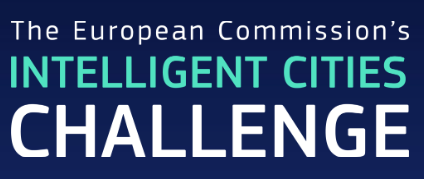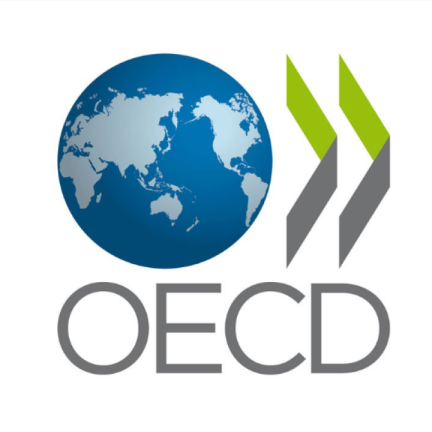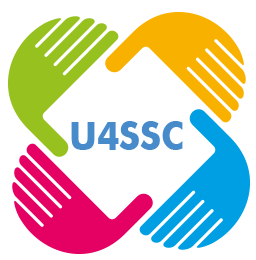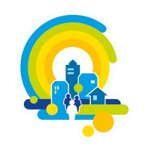

While cities are universally recognised, the notion of a smart city remains unknown to many. The European Commission has shown an increasing interest in this idea and worked on a definition of what makes a city smart: it is “a place where traditional networks and services are made more efficient with the use of digital solutions for the benefit of its inhabitants and businesses”[1]. Following the launch of the European Innovation Partnership on Smart Cities and Communities, the Commission followed up with several strategies and actions that have proven to be key for the achievement of other EU’s strategic objectives, such as the European Green Deal, the Digital Agenda, the Urban Agenda, and the Cohesion Policy. Among such efforts at the EU level, two initiatives can be found that are central to the establishment of standards for smart cities and communities, as well as the provision of frameworks and practical guidance to policymakers and public administrations, namely:
These initiatives, among others, underline that the digital aspect is key for cities and communities to become smart. As a matter of fact, technology can act as an enabler for supporting cities and communities in taking data-based decisions, automatising internal processes, and providing personalised public services[2]. The standard to determine the level of implementation of digital solutions in cities and communities is digital maturity, which refers to the extent to which a city (or even a region) has integrated digital technologies and data-driven strategies into its operations and services. Thus, improving digital maturity is a key objective for cities and communities willing to become smart. To better explain what this process entails, this article will delve into the assessment of cities and communities’ digital maturity and the monitoring of different initiatives launched by the Commission and other international organisations to support them.
To increase their level of digital maturity, it is key that cities and communities know their starting point, as well as the impact of the initiatives put forward to achieve their intended goal(s). In other words, the first step to become smart would be to assess their initial level of digital maturity and see how it may change based on the different decisions they may implement. To do so, the EU has deployed a set of mechanisms, tools and indicators that enable and ease the processes of assessment and monitoring of digital maturity in cities and communities, which include:

| LORDIMAS platform: an interactive digital maturity assessment tool aimed at helping local and regional governments to understand the state-of-play of their digital transition journey. It is built around different sections and it offers many local and regional indicators. LORDIMAS allows users to assess their digital maturity, gain insights, update their data, and collaborate with peers. |

| Digital Cities Challenge Self-Assessment Tool (SAT): it is an online initiative led by the European Commission that helps European cities to assess their level of digital maturity and identify the starting points for developing a digital transformation strategy. The tool allows users to get instant feedback, access Key Performance Indicators (KPIs), compare with other cities, and get inspired by good practices. |

| Digital Maturity Assessment Tool (DMA): it allows European Digital Innovation Hubs (EDIHs) to measure the current level of digitalisation within the organisation and provide a structured pathway to digital transformation and maturity. |
In addition to EU efforts, other international organisations and agencies have been active in this matter and have established frameworks, certifications, and tools with the objective of helping cities and communities to measure their digital maturity level. Such initiatives include:

| OECD’s Smart City Measurement Framework: it is a proposal advanced by the Organisation for Economic Co-operation and Development (OECD) to assess the performance of smart cities. It is based on three pillars: smart city tools, stakeholder engagement, and smart city objectives. The framework aims to capture how digitalisation and digital innovation can improve people’s wellbeing and foster more inclusive, sustainable, and resilient societies. |

| United for Smart Sustainable Cities initiative (U4SSC): a global initiative organised by the United Nations (UN) to guide cities and communities in achieving the UN Sustainable Development Goals by fostering information exchange, partnership building and collaboration. U4SSC offers thematic groups, KPIs and a country hub to support cities in their smart and sustainable development journey. |

| ISO Certification on Sustainable Cities and Communities (ISO 37122): a certification that specifies and measures indicators for smart cities. Together with ISO 37120, establishing indicators for city services and quality of life, this document helps cities measuring their progress towards smart and sustainable development. |
Most of the initiatives listed above also promote lessons learned, resulting from the assessments conducted by smart cities and communities. For instance, the European Observation Network for Territorial Development and Cohesion publishes a list of good practices based on their LORDIMAS Assessment results. Among the nine European cities included in the list, there can be found Alcoy (Spain), which developed its own telecommunications network for Internet of Things (IoT) based on open standards; Amsterdam (the Netherlands), which created an online map that gives residents information about sensors collecting information; and Umeå (Sweden), which established a new single open urban data platform integrating a wide number of data from both public and private sources.
Becoming smart can be challenging for many cities and communities, due to various factors including the lack of expertise and/or the costs associated to the process. In this regard, the EU can play a pivotal role in supporting them to improve their level of digital maturity by providing frameworks and guidelines, allocating funds, easing benchmarking, or promoting collaboration in the processes. Key resources include:

| Living-in.eu movement: an initiative that aims to support cities and regions in advancing their digital transformation according to European values. It brings together different cities in Europe, thus facilitating exchange of ideas and collaborative work. The movement advocates for the re-use and up-scale of existing digital solutions, tools, and guidance. |

| Smart Cities Marketplace: an initiative led by the European Commission to support the green transition of cities by improving citizens’ quality of life, increasing thecompetitiveness of European cities and industry, and reaching European energy and climate targets. The Marketplace offers a range of services such as free technical assistance, consultancy and financing masterclasses. It also fosters a community of focus and discussion groups, and provides insights and news on smart city solutions and events. |

| European Data Space for Smart Communities (EDS4SC): as a Commission-funded project, it seeks to create a common data space for smart cities and communities across Europe. It wants to enable data sharing and interoperability among different stakeholders, and develops a governance framework and a set of tools and services to support the data space. |

| “The making of a smart city: best practices across Europe”: a publication by the Smart Cities Information System (SCIS) showcasing the innovative solutions and experiences of over 80 cities from 19 countries in the fields of energy, mobility and transport, and ICT. The document offers a valuable source of information and guidance for the different stakeholders involved. At the same time, it provides a useful tool for benchmarking. |
All these instruments can bring useful guidance to cities and communities aiming at enhancing their digital maturity. However, the implementation of different initiatives may present some barriers that can put their adaptability and resiliency to test. A recent exercise to examine the challenges that cities and communities face when introducing interoperable solutions was conducted in the framework of the “Study on organisational and cultural interoperability issues arising in local administration when establishing local, regional or national data spaces or local digital twins”. The findings were presented at a NIFO coffee talk held on 27 February 2024, with participants from both EU Member and non-Member States. There, the NIFO Team discussed two main types of interoperability challenges that can arise, namely: cultural and organisational. Whereas the former englobes barriers such as a paradigm shift regarding data sharing, lack of trust, awareness on the benefits of smart city initiatives, or insufficient human capacity and digital skills and literacy; the latter refers to aspects including the definition of leadership responsibilities and common processes, the definition of common objectives, and the organisation of technical aspects.
As this article wanted to point out, improving cities and communities’ digital maturity is a transformative process that demands strategic planning, continuous assessment, and collaborative efforts. During the last decade, many initiatives have been put forward at both the EU and international levels to create frameworks, provide guidance, and develop tools and indicators that ultimately help cities and communities increasing their digital maturity in a sustainable, inclusive, and democratic manner.
In this context, interoperability, can be seen as a solution to help cities and communities overcome their challenges. For this reason, different resources linked to the initiatives listed above have been developed, including a Guidance document including recommendations on the roles, responsibilities, governance structures, processes and workflows relating to organisational and cultural interoperability. Further material can also be accessed on Joinup through a dedicated page tackling interoperability for smart cities.
Overall, the improvement of cities and communities’ digital maturity is not merely a technological endeavour but a holistic transformation aimed at creating more efficient, sustainable, and inclusive urban environments for the benefit of citizens and businesses alike. Looking ahead, cities and communities’ journey will be one of cooperation, adaptation, continuous evaluation, and peer-learning. The path will not always be linear and straightforward, but the instruments created by the Commission and other international bodies will be there to support all interested stakeholders along the process.
[1] Retrieved from: Smart cities - European Commission (europa.eu)